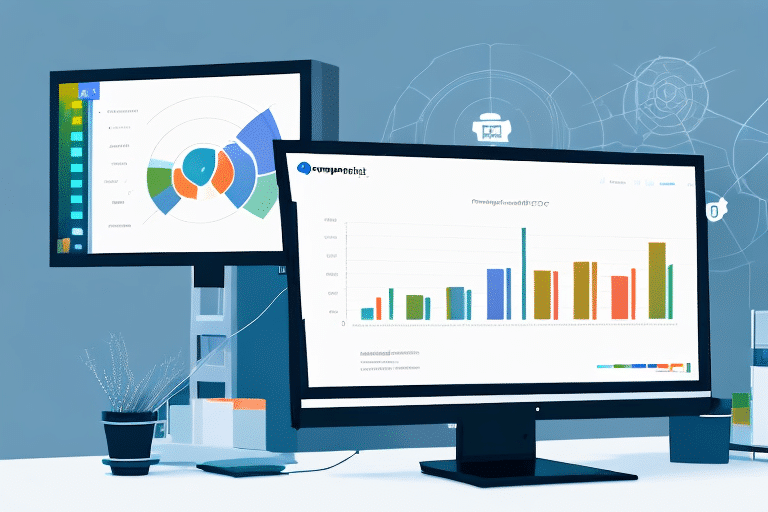Understanding OnTrac and Its Benefits for Priority ERP
Before integrating OnTrac with Priority ERP, it's essential to understand what OnTrac is and how it can enhance your business operations.
OnTrac is a comprehensive logistics and shipping management system that seamlessly integrates with Priority ERP. By leveraging OnTrac, businesses can streamline their shipping processes, improve delivery times, and reduce costs. Integrating OnTrac with Priority ERP centralizes all shipping and logistics operations, providing a unified platform for better management and efficiency.
Key Benefits of OnTrac for Priority ERP Users
- Real-Time Shipment Tracking: Gain visibility into your shipments with live tracking updates.
- Automated Label Printing: Generate shipping labels and documents automatically, saving time and reducing errors.
- Carrier Options and Rate Comparison: Access multiple shipping carriers and compare rates to choose the most cost-effective option.
- Enhanced Customer Service: Faster order fulfillment and shipping times lead to improved customer satisfaction.
- Advanced Reporting and Analytics: Analyze shipping data to identify trends, optimize processes, and make informed decisions.
Step-by-Step Guide to Integrating OnTrac with Priority ERP
Integrating OnTrac with Priority ERP is a straightforward process. Follow these steps to establish a seamless connection:
1. Obtain OnTrac Account Credentials
Start by acquiring your OnTrac account credentials. These are necessary for configuring the integration within Priority ERP.
2. Configure OnTrac in Priority ERP
Navigate to the Settings tab in Priority ERP and select Shipping Configuration. Choose OnTrac as your shipping carrier and enter your account credentials.
3. Manage Shipping Operations
Once configured, access the Shipping tab in Priority ERP to create shipping labels, generate documents, and track shipments in real-time.
4. Utilize OnTrac Shipping Options
Take advantage of OnTrac's shipping options, including same-day and next-day deliveries, to offer faster shipping to your customers. OnTrac's tracking capabilities also keep customers informed about their shipment status, enhancing their overall experience.
Optimizing OnTrac for Enhanced Priority ERP Performance
After integrating OnTrac with Priority ERP, optimization is key to maximizing performance. Implement the following strategies to enhance your setup:
- Automate Carrier Selection: Use shipping rules to automatically select the best carrier based on delivery time and cost.
- Streamline Documentation: Utilize auto-generated shipping documents to simplify your shipping process.
- Customize Tracking Notifications: Set up personalized tracking URLs and notifications to keep customers updated.
- Analyze Shipping Data: Regularly review shipping performance analytics to identify and address areas for improvement.
Additionally, ensure that all shipping data, including addresses, weights, and dimensions, are accurate and up-to-date. Accurate data minimizes delays, avoids extra fees, and enhances customer satisfaction. Consider using reliable shipping software that integrates with OnTrac and Priority ERP to validate and correct shipping information automatically.
Effective Management of OnTrac and Priority ERP Integration
Managing the integrated OnTrac and Priority ERP system efficiently ensures smooth operations. Follow these tips for effective management:
- Automate Workflows: Set up automated workflows to streamline operations and reduce manual intervention.
- Team Training: Educate your team on using the integrated system to maximize its potential.
- Leverage Third-Party Integrations: Extend system functionality with compatible third-party tools and applications.
- Regular Configuration Reviews: Periodically review and update system configurations to maintain optimal performance.
The integrated system offers real-time data tracking and analysis, enabling you to monitor shipping operations effectively. Utilize mobile access features to stay connected and manage operations from anywhere, ensuring responsiveness to any issues or changes.
Troubleshooting Common Integration Issues
While integrating OnTrac with Priority ERP is generally smooth, you might encounter some challenges. Here are common issues and their solutions:
- Connection Problems: Verify your OnTrac account credentials and ensure they are entered correctly.
- Slow Performance: Optimize your system configurations to match your business needs and check for any conflicting processes.
- Label Printing Issues: Ensure printer settings are correctly configured and that you have the necessary drivers installed.
- Data Synchronization Errors: Check synchronization settings and ensure they are properly configured. Installing the latest system updates or patches can also resolve these issues.
Best Practices for Integrating OnTrac with Priority ERP
Adhering to best practices ensures a successful and efficient integration of OnTrac with Priority ERP:
- Define Clear Business Goals: Understand your business needs and objectives before starting the integration.
- Thorough Testing: Test the integration extensively before going live to identify and fix potential issues.
- Regular Configuration Updates: Keep your system configurations updated to maintain optimal performance.
- Stay Informed: Keep abreast of new features and updates from both OnTrac and Priority ERP to leverage the latest functionalities.
Ensure data consistency by regularly cleaning your data for duplicates, errors, and inconsistencies. Establish data governance policies to maintain uniform data entry and management across your organization.
Plan for ongoing support and maintenance by assigning dedicated personnel or teams to monitor the integration, handle troubleshooting, and implement updates as needed. This proactive approach ensures the integration continues to meet your evolving business needs.
Leveraging Data Insights from OnTrac for Informed Decision Making
OnTrac provides valuable data insights that can drive better decision-making within Priority ERP. Utilize these insights to enhance your shipping and logistics operations:
- Performance Metrics: Regularly review metrics such as delivery times and shipping costs to assess performance.
- Trend Analysis: Use analytics tools to identify trends and patterns in your shipping data, informing strategic decisions.
- Data-Driven Policies: Apply insights to refine carrier selection, shipping policies, and other operational aspects.
Monitoring customer feedback and satisfaction related to shipping can highlight areas for improvement and help you maintain high service standards. Positive feedback can also be leveraged to attract new customers by showcasing your efficient shipping processes.
Customizing OnTrac for Unique Business Requirements
While OnTrac offers robust out-of-the-box features, customizing certain aspects can better align the system with your unique business needs:
- Modify Shipping Documents: Add or remove fields from shipping documents to capture necessary information.
- Create Custom Shipping Rules: Develop tailored shipping rules to address specific operational requirements.
- Utilize OnTrac's API: Build custom integrations with other systems and applications using OnTrac's extensive API.
- Partner with Developers: Collaborate with third-party development teams to create bespoke functionalities that enhance the integration.
However, exercise caution with customizations to avoid increased complexity and maintenance challenges. Evaluate your business needs thoroughly and explore existing OnTrac functionalities before implementing custom solutions.
Ensuring Security in OnTrac and Priority ERP Integration
Securing the connection between OnTrac and Priority ERP is crucial to protect your business and customer data. Implement the following security measures:
- Strong Passwords: Use complex and unique passwords for both systems to prevent unauthorized access.
- Two-Factor Authentication: Add an extra layer of security by enabling two-factor authentication.
- Access Controls: Regularly review system logs and manage access controls to ensure only authorized personnel can access sensitive data.
- Security Updates: Keep both OnTrac and Priority ERP updated with the latest security patches and upgrades.
- Physical Security: Ensure that servers and hardware are securely stored and protected from unauthorized physical access.
- Network Security: Implement firewalls and intrusion detection systems to safeguard your network from potential threats.
By adopting these comprehensive security measures, you can safeguard your integrated OnTrac and Priority ERP systems against both digital and physical threats, ensuring the integrity and confidentiality of your business operations.
Conclusion
Integrating OnTrac with Priority ERP can significantly enhance your shipping and logistics operations by centralizing management, improving efficiency, and reducing costs. By following the steps and best practices outlined above, you can ensure a seamless integration that meets your business needs. Additionally, leveraging data insights and maintaining robust security measures will further optimize your operations and protect your valuable data.






















